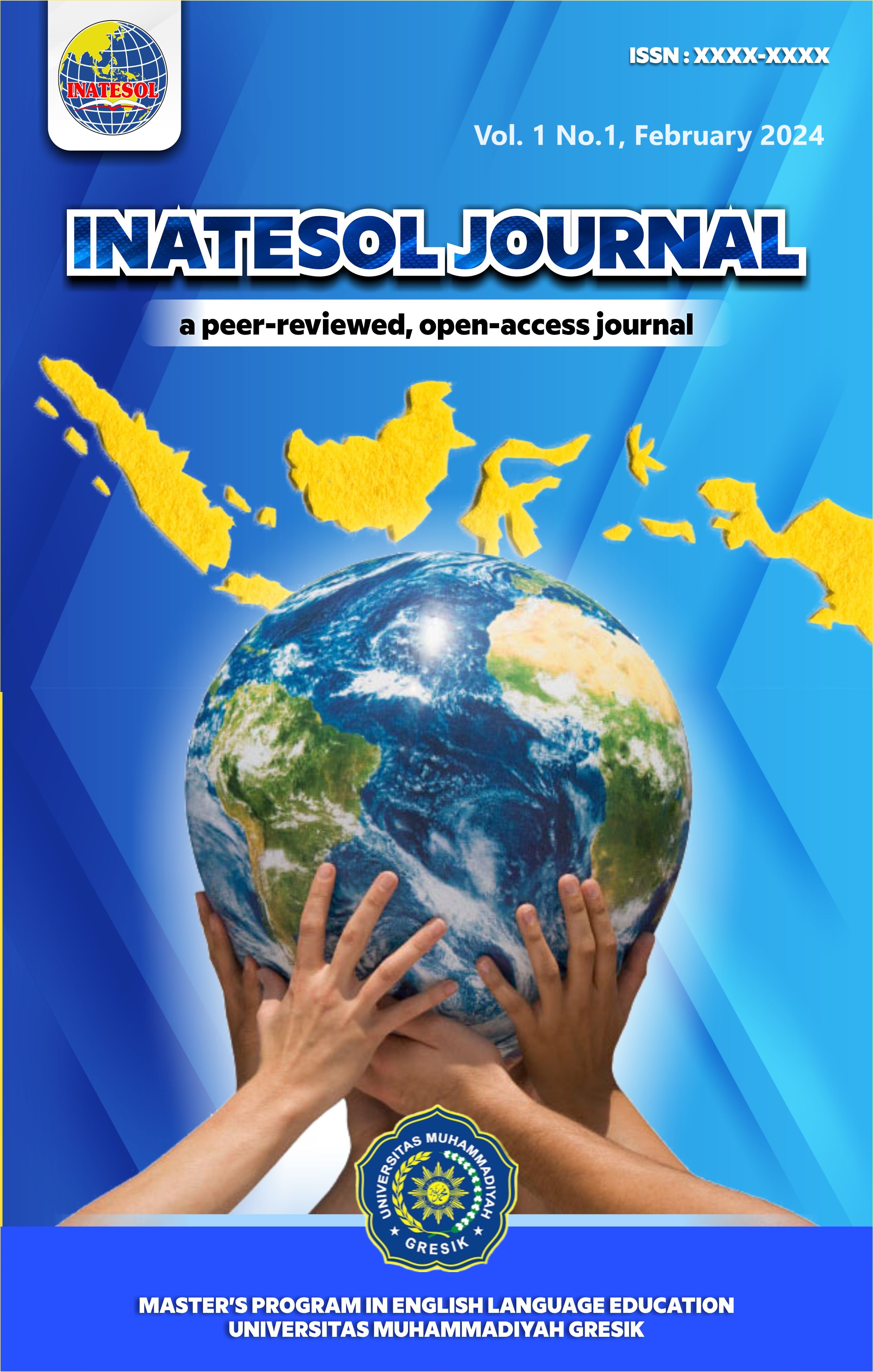INVESTIGATING FOREIGN LANGUAGE SPEAKING ANXIETY LEVELS IN THAILAND ELEMENTARY SCHOOL: GENDER DIFFERENCES
DOI:
https://doi.org/10.30587/inatesol.v1i1.7528Keywords:
Speaking Anxiety, Gender, Elementary SchoolAbstract
This study examines the level of anxiety in speaking a foreign language, especially English, among elementary school students at Ban Nonsawan School, Thailand, focusing on gender differences. The researcher aims to determine whether there is a correlation between anxiety in speaking English and gender. The researcher used descriptive quantitative correlation research design and supported with qualitative data methods to generate hypotheses and theories for further testing and to validate the findings from the quantitative data. The researcher used field interviews as corroboration for this study. The researcher found that elementary school students in Ban Nonsawan, Thailand have high levels of speaking anxiety and also showed that there is a correlation between English speaking anxiety and gender.
References
Ary, D., Jacobs, L. C., & Sorensen, C. (2018). Introduction to Research in Education. https://journals.sagepub.com/doi/10.1177/001316447303300242
Bernat, E., & Lloyd, R. (2007). Exploring the gender effect on EFL learners’ beliefs about language learning. Australian Journal of Educational & Developmental Psychology, 7, 79–91. https://api.semanticscholar.org/CorpusID: 1446-5442
HORWITZ, E. K., HORWITZ, M. B., & COPE, J. (1986). Foreign Language Classroom Anxiety. The Modern Language Journal, 70(2), 125–132. https://doi.org/10.1111/j.1540-4781.1986.tb05256.x
Kalra, R., & Siribud, S. (2020). Public speaking anxiety in the Thai EFL context. LEARN Journal: Language Education and Acquisition Research Network, 13(1). https://www.tci-thaijo.org/index.php/learn
Khreisat, M. N. (2022). Investigating Foreign Language Speaking Anxiety Levels Among Saudi Tertiary Students : Gender and Year Level Differences. The Journal of AsiaTEFL, 19(2), 451–468. https://doi.org/10.18823/asiatefl.2022.19.2.4.451
Kumar, R. (2011). Research Methodology, a step by step guide for beginners. SAGE Publication, 55(4). https://doi.org/10.4236/sm.2018.83016
McCroskey, J. C. (1988). Willingness to Communicate (p. 27). Avoiding communication: Shyness, reticence, and communication apprehension. . https://doi.org/ 10.4236/me.2014.51005
Palupi, R. E. A. (2021). Students’ Speaking Anxiety: Ready or Not. ELE Reviews: English Language Education Reviews, 1(1), 61–71. https://doi.org/10.22515/ele-reviews.v1i1.3592
Purandina, I. P. Y. (2022). Kecemasan Berbahasa Asing Anak Sekolah Dasar Dalam Pembelajaran Bahasa Inggris. Edukasi: Jurnal Pendidikan Dasar, 3(1), 27. https://doi.org/10.55115/edukasi.v3i1.2297
Shamsuri, N. A. B. M., Anita, A., Kamaruddin, L. S. B., & Azhan, N. A. S. B. (2021). Speaking Anxiety and Strategies Used by ESL Learners to Overcome in Their Classroom: a Case Study in Management and Science University (MSU) Shah Alam, Malaysia. Jurnal Kependidikan: Jurnal Hasil Penelitian Dan Kajian Kepustakaan Di Bidang Pendidikan, Pengajaran Dan Pembelajaran, 7(4). https://doi.org/10.33394/jk.v7i4.4243
Suryani, H. (2015). Metode Riset Kuantitatif: Teori dan Aplikasi pada Penelitian. In Google Books. https://books.google.co.id/
Tianjian, W. (2010). Speaking Anxiety:More of a Function of Personality than Language Achievement. https://api.semanticscholar.org/CorpusID:147876089
Wardhaugh, R. (2006). An Introduction to Sociolinguistics. https://ISBN/13/978-1-4051-3559-7
Yaman, H., & Demirtaş, T. (2014). A Research on Speech Anxiety of the Second Grade Primary School Students. Procedia - Social and Behavioral Sciences, 122, 536–542. https://doi.org/10.1016/j.sbspro.2014.01.1389
Downloads
Published
How to Cite
Issue
Section
License
Authors who publish with this journal agree to the following terms:
- Authors retain copyright and grant the journal right of first publication with the work simultaneously licensed under a Creative Commons Attribution License that allows others to share the work with an acknowledgement of the work's authorship and initial publication in this journal.
- Authors are able to enter into separate, additional contractual arrangements for the non-exclusive distribution of the journal's published version of the work (e.g., post it to an institutional repository or publish it in a book), with an acknowledgement of its initial publication in this journal.
Authors are permitted and encouraged to post their work online (e.g., in institutional repositories or on their website) prior to and during the submission process, as it can lead to productive exchanges, as well as earlier and greater citation of published work (See The Effect of Open Access).



_3.png)
_2.png)



